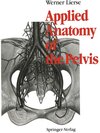
×
![Buchcover ISBN 9783642713682]()
Applied Anatomy of the Pelvis
von Werner Lierse, illustriert von H. Hess, aus dem Deutschen übersetzt von R.R. Wilson und D.P. WinstanleyThe foundation needed for the understanding and hence the treatment of a disease is a knowledge of the natural morphology and physiology of the affected organ and the system to which it belongs. In describing the anatomy of the pelvis and its organs in relation to medical practice, attention will be paid to defensive, reproduc tive, metabolic and excretory systems as well as to describing physical features and surgical approaches. The disposition of the pelvic organs in the body framework merits particular attention. The pelvis and its organs undergo considerable sexual differentiation, the functions of those with opening and closing mechanisms require training, and the pelvis is the keystone of the lower limbs and the spine. Disorders of pelvic organs cause distressing illnesses. Deliberate limitation of the scope of this volume excludes description of the anatomic foundations of pregnancy, childbirth and the puerperium. These will be dealt with in a separate volume. Not only are the anatomic foundations of medical practice the starting point of the account, they are also constantly kept in view. The illustrations and text combine to provide a visual synopsis. The illustrations are based on original dissections and are drawn true to scale as far as possible. No use has been made of special means of visualizing organs or their vasculature, such as roentgenography, computed tomog raphy, arteriography, phlebography, lymphography and sonography. Technical stan dards change rapidly and individual findings inevitably receive overmuch attention. Relevant publications are named in the list of references.



